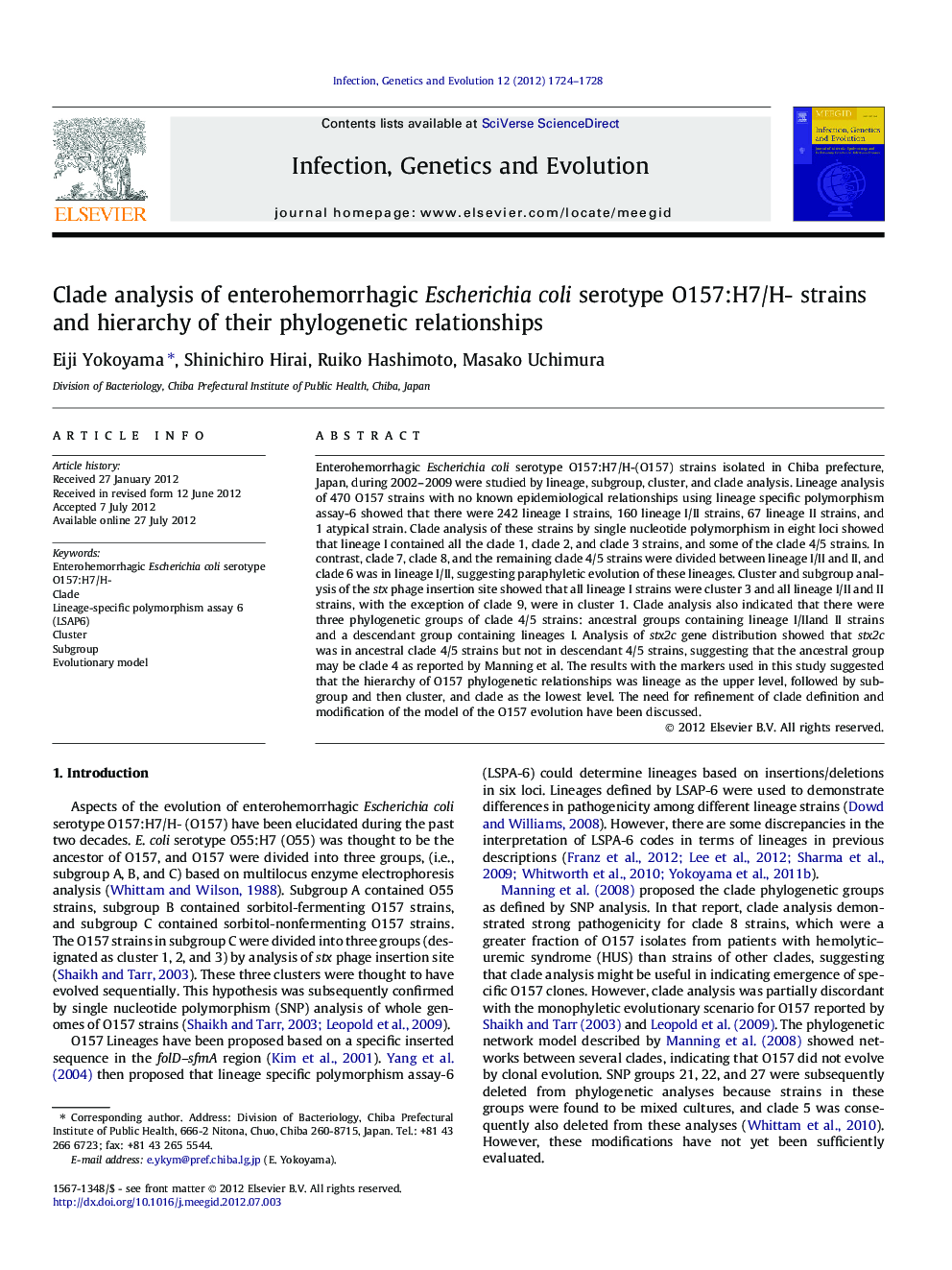| کد مقاله | کد نشریه | سال انتشار | مقاله انگلیسی | نسخه تمام متن |
|---|---|---|---|---|
| 5911284 | 1161362 | 2012 | 5 صفحه PDF | دانلود رایگان |

Enterohemorrhagic Escherichia coli serotype O157:H7/H-(O157) strains isolated in Chiba prefecture, Japan, during 2002-2009 were studied by lineage, subgroup, cluster, and clade analysis. Lineage analysis of 470 O157 strains with no known epidemiological relationships using lineage specific polymorphism assay-6 showed that there were 242 lineage I strains, 160 lineage I/II strains, 67 lineage II strains, and 1 atypical strain. Clade analysis of these strains by single nucleotide polymorphism in eight loci showed that lineage I contained all the clade 1, clade 2, and clade 3 strains, and some of the clade 4/5 strains. In contrast, clade 7, clade 8, and the remaining clade 4/5 strains were divided between lineage I/II and II, and clade 6 was in lineage I/II, suggesting paraphyletic evolution of these lineages. Cluster and subgroup analysis of the stx phage insertion site showed that all lineage I strains were cluster 3 and all lineage I/II and II strains, with the exception of clade 9, were in cluster 1. Clade analysis also indicated that there were three phylogenetic groups of clade 4/5 strains: ancestral groups containing lineage I/IIand II strains and a descendant group containing lineages I. Analysis of stx2c gene distribution showed that stx2c was in ancestral clade 4/5 strains but not in descendant 4/5 strains, suggesting that the ancestral group may be clade 4 as reported by Manning et al. The results with the markers used in this study suggested that the hierarchy of O157 phylogenetic relationships was lineage as the upper level, followed by subgroup and then cluster, and clade as the lowest level. The need for refinement of clade definition and modification of the model of the O157 evolution have been discussed.
⺠O157 strains were studied by lineage, subgroup, cluster, and clade analysis. ⺠The hierarchy of O157 phylogenetic markers was lineage as the upper level. ⺠Clade lowest level of the hierarchy should be refined its definition. ⺠The modification of O157 evolution model has been discussed.
Journal: Infection, Genetics and Evolution - Volume 12, Issue 8, December 2012, Pages 1724-1728